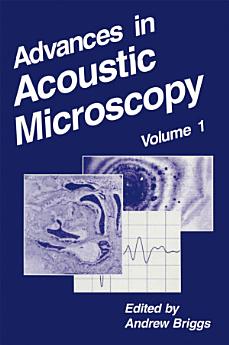Advances in Acoustic Microscopy: Volume 1
nov. de 2013 · Advances in Acoustic Microscopy Libro 1 · Springer Science & Business Media
Libro electrónico
350
Páxinas
reportAs valoracións e as recensións non están verificadas Máis información
Acerca deste libro electrónico
In 1992 Acoustic Microscopy was published by Oxford University Press, in the series of Monographs on the Physics and Chemistry of Materials. Reviews appeared in the Journal of Microscopy [169 (1), 91] and in Contemporary Physics [33 (4), 296]. At the time of going to press, it seemed that the field of acoustic microscopy had settled down from the wonderful developments in resolution that had been seen in the late seventies and the early eighties and from the no less exciting developments in quantitative elastic measurements that had followed. One reviewer wrote, "The time is ripe for such a book, now that the expansion of the subject has perceptively slowed after it was detonated by Lemons and Quate. " [A. Howie, Proc. RMS 27 (4), 280]. In many ways, this remains true. The basic design for both imaging and quantitative instruments is well-established; the upper frequency for routine imaging is the 2 GHz established by the Ernst Leitz scanning acoustic microscope (ELSAM) in 1984. For the most accurate V(z) measurements, the 225-MHz line-focus-beam lens, developed at Tohoku Univer sity a little before then, remains standard. The principles of the contrast theory have been confirmed by abundant experience; in particular the role of surface acoustic waves, such as Rayleigh waves, dominates the contrast in most high resolution studies of many materials.
Valora este libro electrónico
Dános a túa opinión.
Información de lectura
Smartphones e tabletas
Instala a aplicación Google Play Libros para Android e iPad/iPhone. Sincronízase automaticamente coa túa conta e permíteche ler contido en liña ou sen conexión desde calquera lugar.
Portátiles e ordenadores de escritorio
Podes escoitar os audiolibros comprados en Google Play a través do navegador web do ordenador.
Lectores de libros electrónicos e outros dispositivos
Para ler contido en dispositivos de tinta electrónica, como os lectores de libros electrónicos Kobo, é necesario descargar un ficheiro e transferilo ao dispositivo. Sigue as instrucións detalladas do Centro de axuda para transferir ficheiros a lectores electrónicos admitidos.







